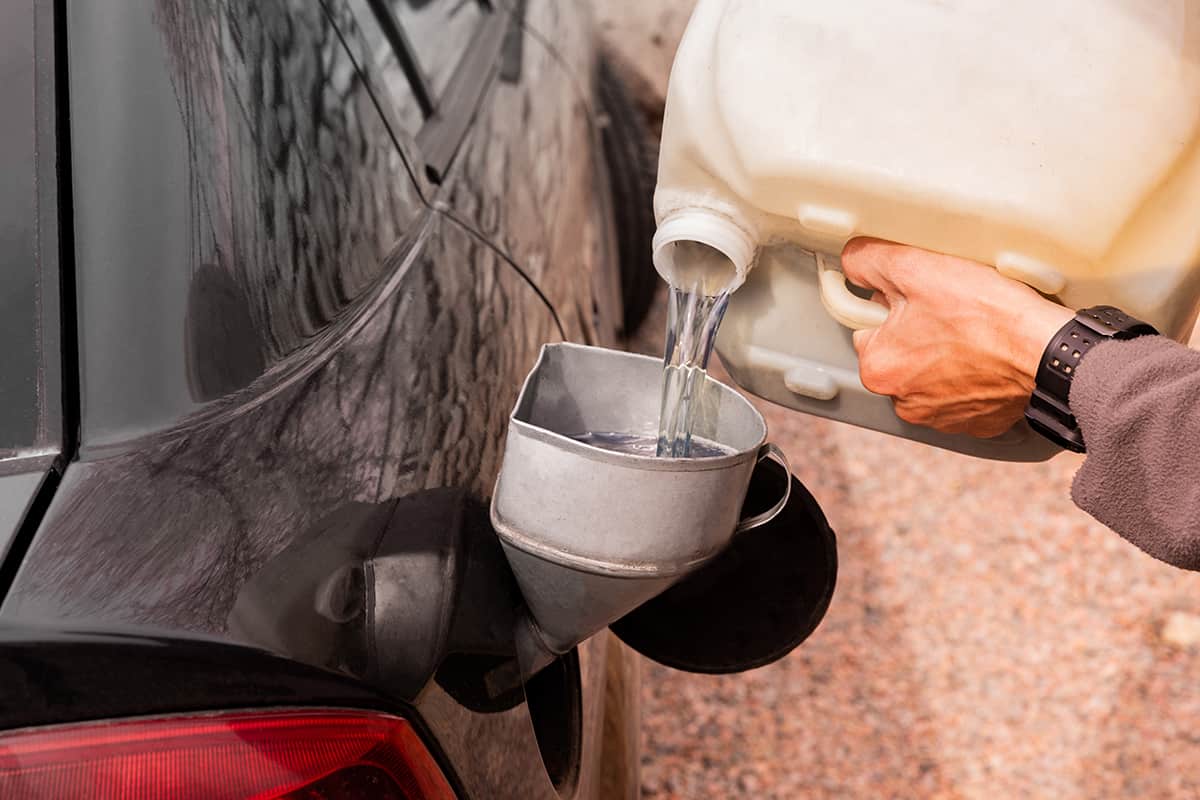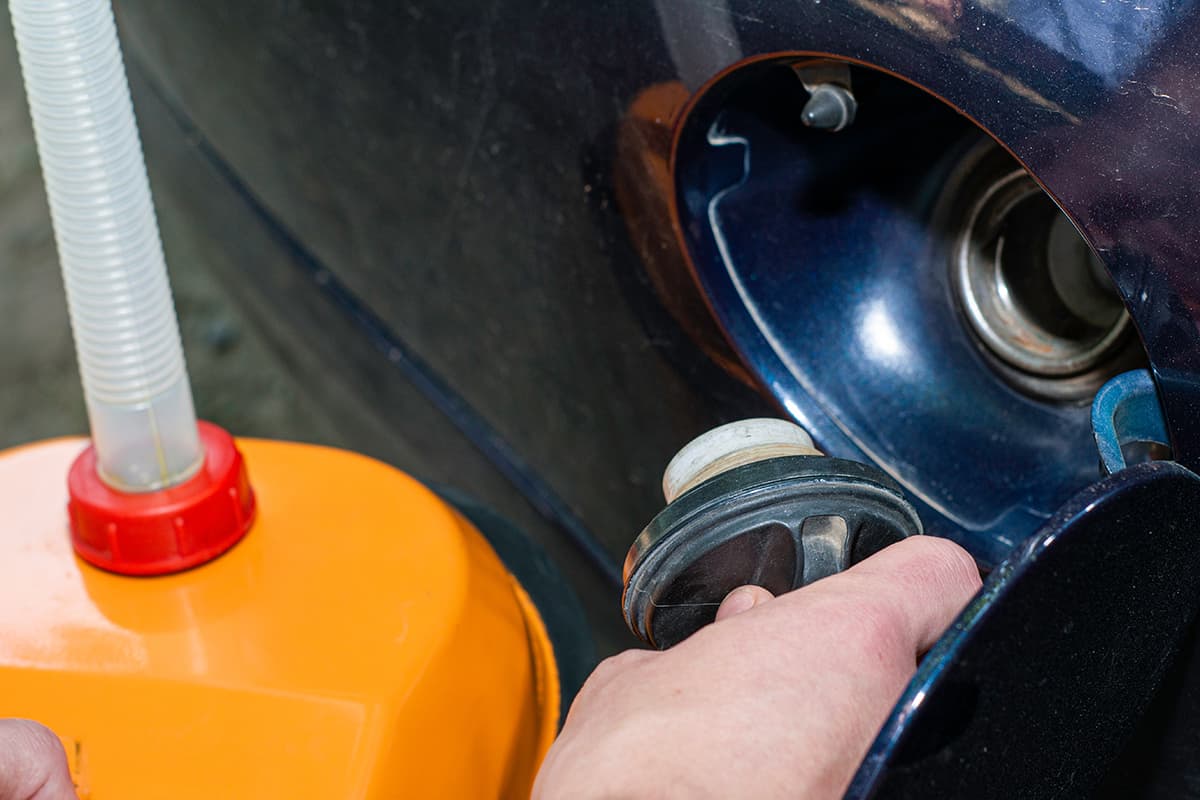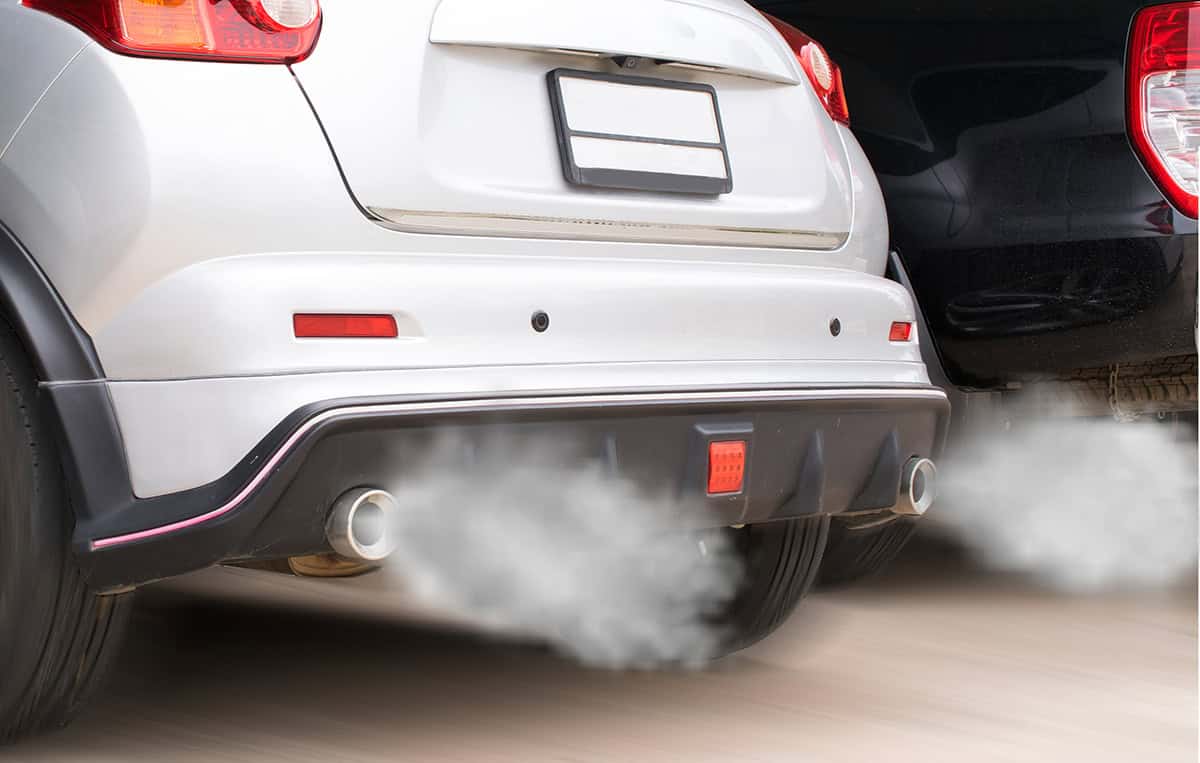Water contamination in your vehicle’s gas tank is a more common issue than many drivers realize. This problem can lead to a range of engine complications, degrade the vehicle’s performance, and even potentially cause permanent damage if left untreated. The presence of water disrupts the efficient combustion of fuel, which can manifest in numerous ways, disrupting your smooth driving experience.
The following symptoms may indicate that there’s water in your car’s gas tank:
- Difficulty starting the vehicle
- Decreased fuel efficiency
- Engine misfiring and sputtering
- White exhaust smoke
- Frequent engine stalling
- Unusual engine noises
In this guide, we will discuss the issue of water in the gas tank. We will explore the causes, effects, symptoms, and solutions related to this issue.
How Does Water Get in the Gas Tank?

The gas tank of your vehicle is designed to hold and supply gasoline to the engine. However, under certain circumstances, water can find its way into this storage system. The intrusion of water into your gas tank can lead to a host of problems, ranging from poor performance to engine damage.
1. Condensation
The most common way water gets into a gas tank is through condensation. This typically occurs when your vehicle experiences significant temperature fluctuations. For instance, in the heat of the day, the air inside your gas tank can warm up, and when the temperature drops at night, this warm air cools down and forms condensation on the walls of the tank.
If you often keep your fuel level low, there’s more space for air, which increases the risk of condensation. These droplets of water can accumulate and settle at the bottom of your gas tank, as water is denser than gasoline.
2. Faulty Seals
Faulty or degraded seals on your gas cap or fuel system can also allow water to seep into your gas tank. These seals are designed to prevent external contaminants from infiltrating the fuel system. Over time, however, these seals may degrade due to wear and tear, damage, or poor maintenance, allowing water from rain, snow, or other sources to leak into your gas tank.
3. Poor Quality Fuel
The problem may begin at the source: the gas station. Fuel storage tanks are usually underground, where they can also be susceptible to water leakage. If these tanks are damaged or not well maintained, water may seep into them, contaminating the fuel. When you fill up at such a station, you may end up pumping water-contaminated gasoline into your vehicle’s gas tank.
4. Exposure to Flooding
This typically happens when the vehicle is parked in a flooded area or driven through a deep puddle or flooded roadway. If the gas cap is submerged, and the seals are not watertight, water can easily infiltrate your fuel system.
5. Improper Handling and Storage of Fuel
If you store gasoline in a can or tank before use, improper handling and storage can lead to water contamination. This can occur due to condensation within the storage can or if the container is not sealed properly, allowing rain or snow to get inside.
Symptoms of Water in the Gas Tank

Water in your vehicle’s gas tank can cause several issues affecting its overall performance and functionality. Here are the most common signs that might indicate the presence of water in your gas tank:
1. Difficulty Starting Your Vehicle
Water in the fuel can disrupt the combustion process within the engine. Since water doesn’t combust like gasoline, it can cause the engine to behave erratically or prevent it from starting entirely.
2. Poor Fuel Efficiency
Water doesn’t provide the same energy as gasoline during combustion. Thus, if there’s water in the gas tank, your vehicle will need to consume more fuel to generate the same amount of power, resulting in poor fuel mileage.
3. Engine Misfire and Sputtering
As the engine tries to combust the water-contaminated fuel, it may sputter and jerk, especially during acceleration. These irregularities are caused by the inconsistent combustion of the fuel-water mixture in the cylinders.
4. White Smoke from the Exhaust
While a certain amount of exhaust is normal, excessive white smoke can indicate a problem. When this water is expelled through the exhaust system, it turns into steam, creating thick white smoke.
5. Frequent Stalling
Since water doesn’t combust like fuel, it can cause your vehicle to stall, especially during idling or low-speed driving. This problem arises as the water interrupts the fuel flow, leading to an insufficient supply of fuel to the engine for maintaining the idle speed.
6. Unusual Engine Sounds
When water enters the combustion chamber, it turns to steam, causing the pressure in the cylinder to rise. This can result in strange noises, which are often more pronounced during acceleration.
Long-Term Effects of Water in Your Gas Tank
The presence of water in your vehicle’s gas tank can have a multitude of effects, all of which can negatively impact the performance, efficiency, and longevity of your car. If not addressed promptly, water in your gas tank can lead to severe, long-term damage to your engine and fuel system. These damages include:
- Corrosion of Fuel System Components: Water can cause rust and corrosion in your fuel system, damaging various components like fuel injectors, fuel pumps, and fuel lines.
- Engine Wear and Damage: Over time, the constant misfires and stalling caused by water in the fuel can lead to significant wear and tear on your engine. In severe cases, it may even lead to complete engine failure.
- Catalytic Converter Damage: The catalytic converter, an essential part of your vehicle’s exhaust system, can be damaged by water passing through it. Water can cause the catalyst materials inside the converter to break down, negatively affecting its ability to reduce harmful emissions.
What to Do When You Have Water in Your Gas Tank

Discovering water in your vehicle’s gas tank can be worrisome, but there are several steps you can take to address this issue.
1. Do Not Drive Your Vehicle
The moment you suspect that there’s water in your gas tank, avoid driving your vehicle. This will help prevent further damage to the engine and fuel system, as continuing to run the engine with contaminated fuel can cause severe issues.
2. Inspect the Gas Cap and Seals
Check your gas cap and the seals around it for any signs of damage. These components play a vital role in keeping out contaminants, including water. If these are damaged, it’s a good idea to replace them immediately to prevent more water from getting into your gas tank.
3. Use a Fuel Additive
Fuel additives or fuel treatments can help remove small amounts of water from your gas tank. These additives, often referred to as “fuel dryers,” contain special chemicals that can absorb the water, allowing it to be burned off during the combustion process. However, these additives are generally only effective for small amounts of water.
4. Drain and Clean Your Gas Tank
For larger amounts of water, you may need to drain your gas tank. This can be a complex task, and it’s often best to enlist the help of a professional mechanic to ensure it’s done correctly and safely. After draining the tank, clean it to ensure all traces of water are removed.
5. Replace the Fuel Filter
Water in the gas tank can cause the fuel filter to clog, reducing the fuel flow to the engine. Therefore, it’s a good idea to replace the fuel filter after dealing with water in your gas tank. This will help ensure that clean fuel is being delivered to your engine.
6. Check and Clean the Fuel Injectors
Fuel injectors can also be affected by water in the gas tank. Water can cause these components to become clogged or rusted, affecting their ability to deliver fuel to the engine. You may need to have your fuel injectors inspected, cleaned, or even replaced to restore your vehicle’s performance.






